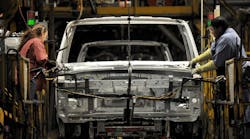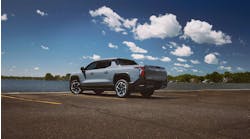Demand for “low cost” trucks – defined as commercial vehicles priced 15% to 25% lower than average units within a specific class – is expected to grow in North America and Western Europe over the next seven years, according to a recent study, as fleets seek ways to trim back equipment expenses.
“Various regulations have added more and more money to the base cost of commercial vehicles over the last several years,” noted Sandeep Kar, global VP of automotive & transportation research at global consulting firm Frost & Sullivan, which conducted this “low cost truck” study.
Exhaust emission reduction mandates, greenhouse gas (GHG) emission rules aimed at reducing fuel consumption, and safety technology mandates are just some of the reasons for the rapid climb in base truck prices, Kar told Fleet Owner.
Frost & Sullivan’s study, authored by Marshall Martin, found the demand for inexpensive equipment will be most acute in regional and local delivery freight markets. “The long-haul segment, however, will be ‘out of bounds’ for low cost trucks for the foreseeable future,” he noted.
The firm’s research indicates that sales of low cost truck models should experience a compound annual growth rate (CAGR) of 5.4% in North American and 15.8% in Western Europe through 2022, with global CAGR for low cost trucks hovering at 2.1% during that period, with total global sales of “low cost” trucks hitting 1.22 million units by 2022.
Kar also believes the “uberization” trend within the North American freight market – specifically within major urban centers – will be a main driver of low cost truck demand.
“Smaller size businesses especially will be looking for low cost vehicles to move goods over last mile and intra-urban routes,” he explained. “These are trucks that will use smaller engines, powertrains, and won’t need the ‘creature comforts’ required by drivers in the long-haul segment.”
Martin added that this is where “surgical intrusiveness” by truck manufacturers will become paramount – perhaps making items such as air conditioning optional for trucks operating in climates where it is not needed.
The trick, emphasized Kar, will be offering low cost truck platforms that meet all applicable safety mandates – compliance that he estimated adds $20,000 to the base cost of Chinese- and Indian-built low cost truck models. “Right now the barriers to entry are too high for those OEMs,” he pointed out.
That being said, Frost & Sullivan’s research indicates that low-cost trucks will evolve in terms of quality and safety features, due to strengthening regulations across the globe blurring “distinction lines” that exist between the “low-cost” and “value” segments of the market.
Kar also stressed that low-cost trucks are not projected to “take over” and dominate the North American and Western European markets, either.
“The TCO [total cost of operation] calculation for these kinds of trucks is not there yet,” he noted. “However, customer expectations will change as [they] become more open to the shorter useful life of such trucks in exchange of lower upfront cost.”



